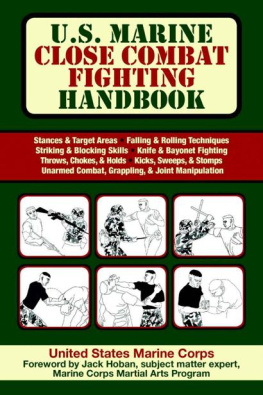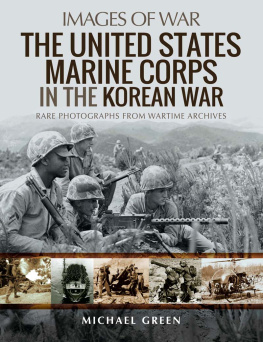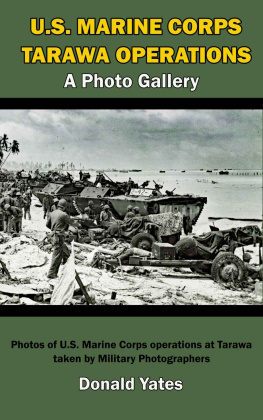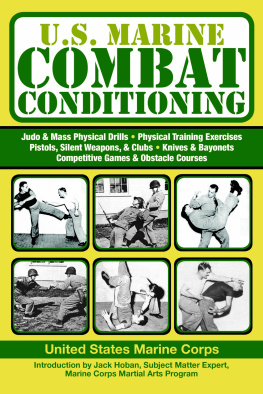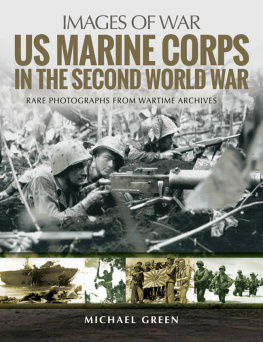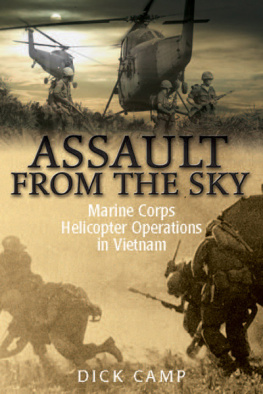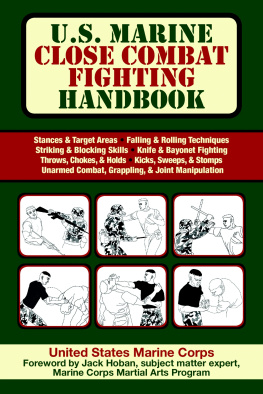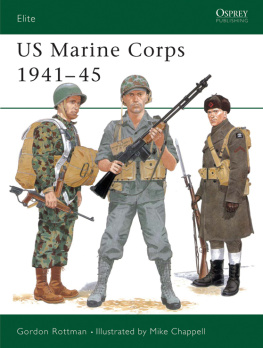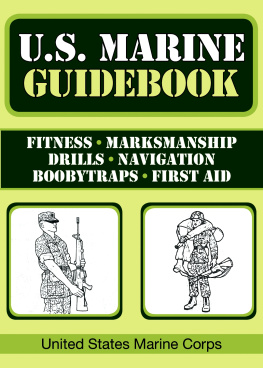The United States Marine Corps - U.S. Marine Close Combat Fighting Handbook
Here you can read online The United States Marine Corps - U.S. Marine Close Combat Fighting Handbook full text of the book (entire story) in english for free. Download pdf and epub, get meaning, cover and reviews about this ebook. year: 2011, publisher: Skyhorse Publishing, genre: Romance novel. Description of the work, (preface) as well as reviews are available. Best literature library LitArk.com created for fans of good reading and offers a wide selection of genres:
Romance novel
Science fiction
Adventure
Detective
Science
History
Home and family
Prose
Art
Politics
Computer
Non-fiction
Religion
Business
Children
Humor
Choose a favorite category and find really read worthwhile books. Enjoy immersion in the world of imagination, feel the emotions of the characters or learn something new for yourself, make an fascinating discovery.
- Book:U.S. Marine Close Combat Fighting Handbook
- Author:
- Publisher:Skyhorse Publishing
- Genre:
- Year:2011
- Rating:3 / 5
- Favourites:Add to favourites
- Your mark:
- 60
- 1
- 2
- 3
- 4
- 5
U.S. Marine Close Combat Fighting Handbook: summary, description and annotation
We offer to read an annotation, description, summary or preface (depends on what the author of the book "U.S. Marine Close Combat Fighting Handbook" wrote himself). If you haven't found the necessary information about the book — write in the comments, we will try to find it.
U.S. Marine Close Combat Fighting Handbook — read online for free the complete book (whole text) full work
Below is the text of the book, divided by pages. System saving the place of the last page read, allows you to conveniently read the book "U.S. Marine Close Combat Fighting Handbook" online for free, without having to search again every time where you left off. Put a bookmark, and you can go to the page where you finished reading at any time.
Font size:
Interval:
Bookmark:

Copyright 2010 by Skyhorse Publishing, Inc.
Foreword copyright 2010 by Jack Hoban
All Rights Reserved. No part of this book may be reproduced in any manner without the express written consent of the publisher, except in the case of brief excerpts in critical reviews or articles. All inquiries should be addressed to Skyhorse Publishing, 307 West 36th Street, 11th Floor, New York, NY 10018.
Skyhorse Publishing books may be purchased in bulk at special discounts for sales promotion, corporate gifts, fund-raising, or educational purposes. Special editions can also be created to specifications. For details, contact the Special Sales Department, Skyhorse Publishing, 307 West 36th Street, 11th Floor, New York, NY 10018 or info@skyhorsepublishing.com.
www.skyhorsepublishing.com
10 9 8 7 6 5 4 3 2 1
Library of Congress Cataloging-in-Publication Data
U.S. Marine close combat fighting handbook / United States Marine Corps. p. cm.
9781616081072
1. Hand-to-hand fighting--Handbooks, manuals, etc. 2. United States. Marine Corps--Physical training--Handbooks, manuals, etc. 3. Soldiers--Training ofUnited States--Handbooks, manuals, etc. I. United States. Marine Corps.
U167.5.H3U178 2010
359.965480973--dc22
2010021497
Printed in China
In the spring of 1996, the Commandant of the Marine Corps, General Chuck Krulak, convened a Close Combat Review Board (CCRB) at the Marine Corps Base in Quantico, Virginia. A number of subject matter experts (SMEs) were assembled to represent various perspectives on Close Combat, and I was pleased and flattered to be among them.
Our mission was to review the Marine Corps doctrine on Close Combat and recommend revisions orif necessaryan overhaul of the Program. It was a lively group that included a World War II veteran whose time with the Office of Strategic Services (OSS) had made him an expert in silent killing techniques, various Marines known for being experienced martial artists, and several men who had worked in the dangerous field of personal protection after serving as Marines. I was invited because of my reputation as a Marine martial artist and longtime student and practitioner of Japanese battlefield arts. I was also representing Robert L. Humphrey, who had killed an enemy solider with a butt stroke while serving as a rifle commander on Iwo Jima. Humphrey, a confidant of General Krulak, was too ill to attend, and passed away shortly thereafter.
We were a fairly collegial group, sincerely dedicated to making recommendations to the Marine Corps that would adequately address the combat needs of Marines in the relatively new era of low intensity conflict (LIC). A sense of cohesion and shared purpose developed gradually over the course of that week due in part to some after-hours training sessions sponsored by one of the men. In those sessions, we shared a gritty, no-nonsense training experience. That small dose of shared adversity broke down some of the natural barriers between us and created a warrior bond. Actually trainingas opposed to talking and debatingtends to do that.
That is not to say that we were all singing from the same sheet of music. We werent. And as the week progressed it was clear that there were at least two fundamentally different viewpoints on the approach that should be taken in revamping the Close Combat program. This may be an oversimplificationand it certainly is a personal point of viewbut it appeared that one group felt that the objective was to compile the most vicious and effective hurting and killing techniques in history. This new Close Combat system would be for Marines by Marines and designed to make Marines the most feared close combatants the world had ever known. Although we were all mostly on board with the new program being tough and effectiveand an extension of the legacy of Biddle and Walkerthere was another group that was focused on the ethical issues of Close Combat.
Was it possible for the new program to provide all the skills needed along the entire continuum of force, while also producing Marines who were Ethical Warriors? Although the idea of an honorable and ethical Marine was appealing, there were a number of people who feared that including values-training in the curriculum was outside the scope of our mandate. They feared that such training might be a distraction and could possibly, in the context of the realities of Close Combat, put Marines at risk by making them hesitant or soft. A valid concern, indeed. We left the CCRB without truly resolving how to integrate the ethics into the curriculum.
Our findings and recommendations went through the usual vetting and revisions (I recall receiving draft copies at various points between 1996 and 1999), and eventually resulted in the document you hold in your hands. As you will see, there is little mention of the ethics discussions that occurred at the CCRB. In my opinion, the lack of an ethical component in the Marine Corps Close Combat Training Program (MCCCTP), for which this manual provides the doctrinal basis, is why it was superseded by the new Marine Corps Martial Arts Program (MCMAP) in 2000.
MCRP 3-02B is an interesting and historical document. In many ways it is the basis for the physical techniques of MCMAP, especially the tan belt curriculum. After all, there is not much that is radically newperhaps not for a few millenniain the basics of Close Combat. Therefore, regarding the technical aspects of Close Combat, this book is a valuable addition to the warriors library. However, what we have learned (or relearned) since the publication of this manual is that warriors need more than physical techniques to prevail in Close Combat. The combat mindset is vitally important, but they also must have the ethics of a warrior. These ethics ensure that our Marines act in accordance with our Core Values of honor, courage, and commitment as they apply close combat techniques as Ethical Warriors and protectors of our country. True, ethics without the physical skills may not make an effective Marine Close Combatant, but possessing these dangerous physical skills without ethics may create a thug who could use these them inappropriately, thus bringing shame and dishonor upon our Corps and country in this delicate era of Counterinsurgency (COIN).
Semper Fidelis .
Jack Hoban Subject Matter Expert, Marine Corps Martial Arts Program President, Resolution Group International
18 February 1999
FOREWORD
Todays Marines operate within a continuum of force where conflict may change from low intensity to high intensity over a matter of hours. Marines are also engaged in many military operations other than war, such as peacekeeping missions or noncombatant evacuation operations, where deadly force may not be authorized. During noncombative engagements, Marines must determine if a situation warrants applying deadly force. Sometimes Marines must decide in a matter of seconds because their lives or the lives of others depend on their actions. To make the right decision, Marines must understand both the lethal and nonlethal close combat techniques needed to handle the situation responsibly without escalating the violence unnecessarily. Marine Corps Reference Publication (MCRP) 3-02B, Close Combat , provides the tactics, techniques, and procedures of Marine Corps close combat. It also provides the doctrinal basis for the Marine Corps Close Combat Training Program (MCCCTP).
Font size:
Interval:
Bookmark:
Similar books «U.S. Marine Close Combat Fighting Handbook»
Look at similar books to U.S. Marine Close Combat Fighting Handbook. We have selected literature similar in name and meaning in the hope of providing readers with more options to find new, interesting, not yet read works.
Discussion, reviews of the book U.S. Marine Close Combat Fighting Handbook and just readers' own opinions. Leave your comments, write what you think about the work, its meaning or the main characters. Specify what exactly you liked and what you didn't like, and why you think so.

